Table of Contents Show
RV setup mistakes are alarmingly common — but also not unexpected. You’re essentially setting up your home’s utilities every few days or weeks, with slightly different utility sources each time.
It would be easy to slip up occasionally unless you have an airtight system to help you manage it. We looked into the top issues with RV setups and some simple solutions to help you avoid them.
What Makes Setting Up RVs So Challenging?
Let’s face it, RVs are complicated. Whether you have a class A or a travel trailer, you have lots of systems and equipment on board. These include your power, water, sewage, propane, internet/data, and more.
Therefore, it can be easy for a step or two to slip through the cracks during setup.
You may be tired from a long drive, or you may simply be a new RVer still learning the ropes. No matter the reason, one missed step can lead to serious issues immediately or down the road.
5 RV Setup Mistakes That Are Easy to Avoid
Regardless of your rig or campsite, there are some common RV setup mistakes you should avoid. Fortunately, none of the solutions are very difficult.
1. Not Leaving Room for Your Slides
When you arrive at your campsite, you’ll want to expand your slides. This lets you take advantage of your whole living space.
However, if you’re too close to a tree, neighboring RV, or other barriers, you won’t be able to open them.
This forces you to reposition your RV, which could be simple or a significant hassle depending on your parking situation.
Tips for Success: Firstly, know your slides like the back of your hand.
Learn how far they expand and exactly where on your rig they stick out.
Simply keeping this in mind while parking can eliminate most problems.
If you have a large RV or aren’t confident, a spotter can help guide you into a safe position.
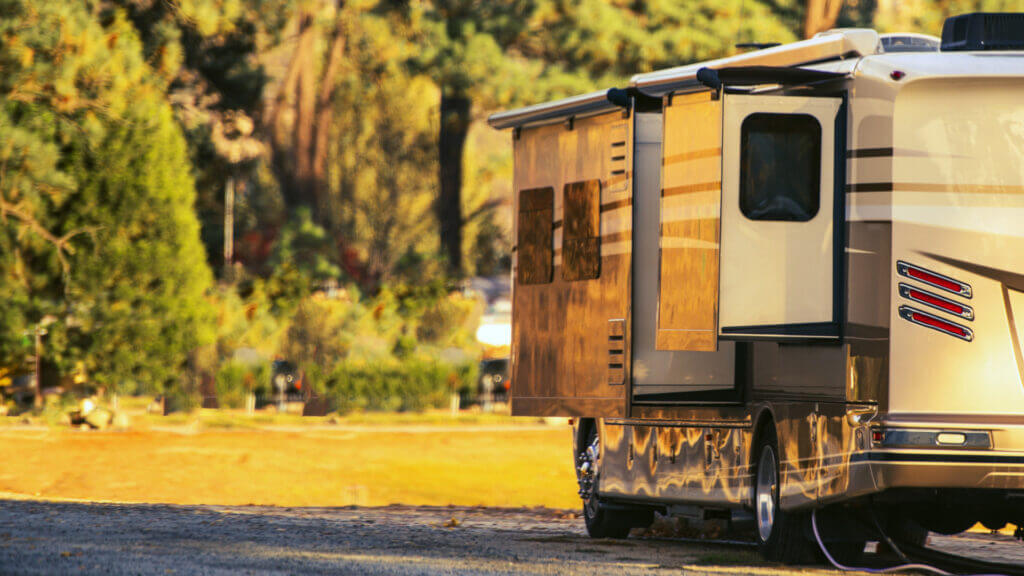
2. Hooking Up Without a Surge Protector
When traveling from RV park to RV park, it can be difficult to know the quality of the electrical system you’re connecting to.
Everything may appear fine, but faulty wiring can fry your RV’s electronics.
Electrical repairs are expensive and time-consuming, which can put a dent in your travel budget.
Tips for Success: Don’t leave home without an RV surge protector. They’re well worth the cost in both avoided repair costs and peace of mind.
You can also opt for an electrical management system to protect against electrical problems beyond high voltage spikes.
3. Not Using a Water Filter
Everything we mentioned about not knowing the quality of RV park electrical systems is equally true about the water.
In almost all cases, it’ll be safe enough to drink. But depending on the water source, it may have an unpleasant flavor.
It could even be filled with tiny particles that can seriously damage your RV fresh water system.
Not using a filter allows these particles and other harmful contaminants to flow directly into your faucet, shower, and fixtures.
Tips for Success: Purchase an inline water filter, and keep it with your water hose.
These filters do their work between the water source and your RV’s freshwater fill tank.
Keeping your filter with your water hose will make it harder to forget this step.
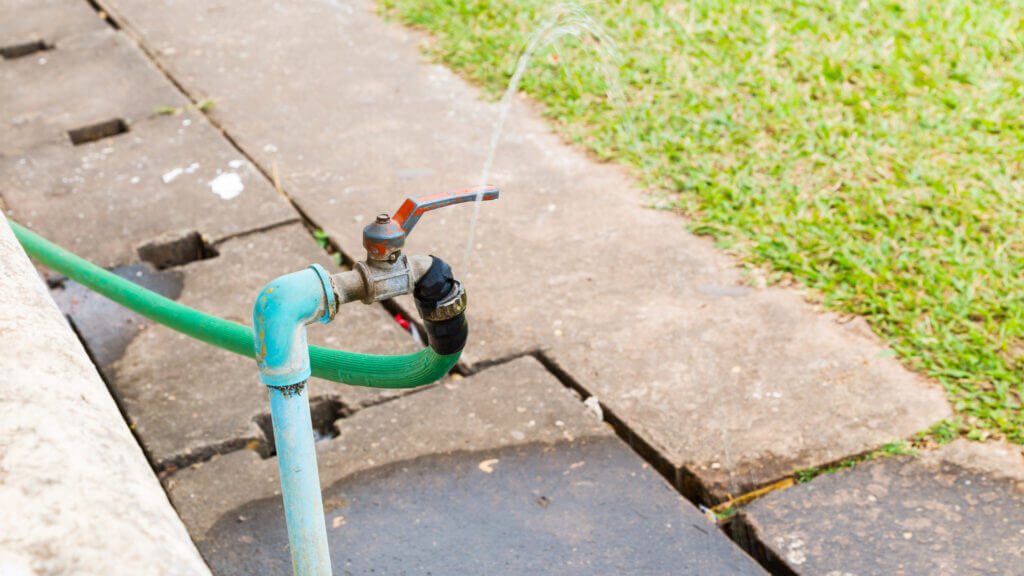
4. Using Your Stabilizers to Bear Weight
This is one of the most common RV setup mistakes. And you might not even realize you’re making it until it’s too late.
Stabilizers help stabilize your rig so it doesn’t move on its suspension while you camp.
However, it’s a fine line between stabilizing and putting the weight of your RV on the jacks.
Tips for Success: The easiest way to avoid this RV setup mistake is to camp on as flat a site as possible.
That eliminates some of the hassles of making sure your RV is level as you stabilize.
Once you’ve leveled your rig, raise your stabilizers until they securely touch it, but not so much that they press upward and take on weight.
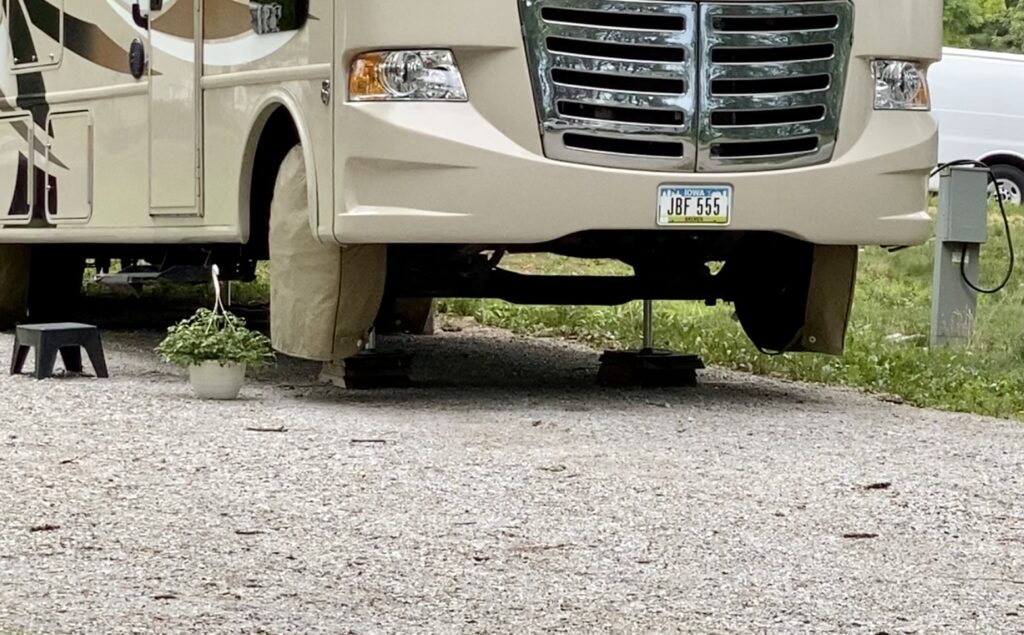
5. Keeping Your Sewer Hose on the Ground
Gravity is your friend when dealing with the unpleasant contents of your black tank.
Allowing your sewer hose to sit on the ground negates gravity’s help and can lead to backups, leaks, or other problems.
Sewer hoses resting on the ground are also more prone to accidental damage.
Finally, in colder climates, leaving your sewer hose on the ground can also lead to freezing within the hose. That’s a clog no one wants to defrost!
Tips for Success: The fix for this RV setup mistake is pretty simple. Keep your hose elevated and sloped.
RV sewer hose supports are easy to find and relatively affordable. This is another item you can keep right with your sewer hose, if possible.
The few extra minutes it takes to set up the supports can protect your hose and ensure proper draining.
Consider These RV Setup Mistakes Avoided
RV setup mistakes may be common, but they don’t have to happen to you. With the help of checklists, experience, and your fellow travelers, you can easily overcome many of these frequently seen problems.
Keep these things in mind next time you’re getting settled, and you should enjoy an easy, problem-free setup. Do you have any set-up horror stories?





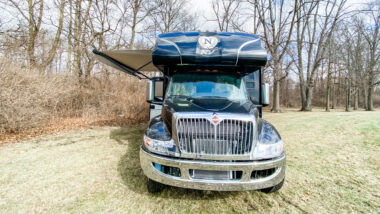
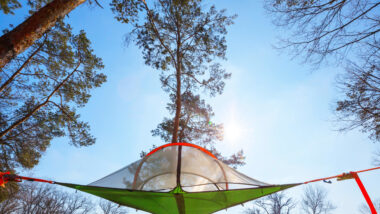
A half inch piece of white PVC pipe three feet long with the depth of each of your slides marked on it works great
Along with the water filter, use a pressure regulator.
Mine stay attached to each other. I also use hose quick connectors.
Not chocking the wheels on the trailer before disconnecting. We ruined a pair of jacks this way and almost had a worse accident on unlevel ground.